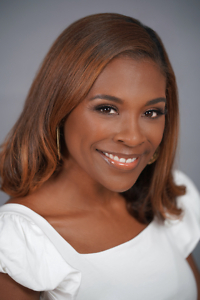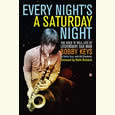Difficult Choices, Few Options
Sadeqa Johnson’s The House of Eve surveys the possibilities for two young Black women in the 1950s
Sadeqa Johnson’s powerful fifth novel, The House of Eve, is set against the backdrop of 1950s America with two protagonists who embody what it meant to be a Black woman at that time. Both are forced to make difficult choices in a society that doesn’t allow them many options. This moving work of historical fiction uses layered storytelling to weave the experiences of distinctive characters through broader social issues.

Ruby Pearsall is a high school student who’s been kicked out of the house because her mother’s boyfriend showed a sexual interest in her. “Leap’s wandering eyes always made me self-conscious. Usually I avoided him as best I could, but in that moment I didn’t look away.” She needed bus fare to get to school, and Leap compels her to kiss him in exchange for a few dollars.
Forced to live with her aunt, the young woman plans on going to college to transcend the confines of poverty and family strife into which she was born: “I had been the family’s piece of hope, the one smart enough to go to college, the girl to make three generations of tired, poor, Negro women proud.” Her goal is to become a doctor and help people like her grandmother Nene, who lost her eyesight to a degenerative disease. But when a forbidden love affair threatens to derail everything she’s worked for, she must make a difficult choice for her future.
Eleanor Quarles is a college sophomore at Howard University. Raised by two loving parents in a small town, she struggles to fit in at the elite institution where colorism and classism are as much a part of life as they are in the wider world: “Eleanor hadn’t even known that Negroes separated themselves by color until she stepped foot onto the all-Negro university’s campus a year ago. The Negroes in her hometown were too busy getting along with everyone to pit themselves against each other.” When she meets William, a medical student from a wealthy D.C. family, her desire to fit in collides with circumstances beyond her control as her life takes an unexpected turn.
Both women are ambitious and want to “have it all,” but even as their stories unfold in a time before the women’s movement, their challenges are achingly familiar. When Ruby falls in love with a Jewish boy from the neighborhood and gets pregnant while still in high school, she is blackmailed by the boy’s mother into going to a home for unwed mothers to keep the scholarship that will allow her to attend college. Ruby’s story is that of millions of women who were forced to surrender their babies in the post-war era, when abortion was illegal across the U.S.
 At the maternity home, Ruby and the other girls are forced to do manual labor in exchange for room and board. If they fall out of line, they are put in the “shaming room,” a form of solitary confinement where shame is the instrument of punishment. In this grim place, Ruby’s story is intertwined with the stories of other young women, some of whom were raped, who are forced to carry their babies to term and then pressured to give them up to married couples deemed more suitable parents. These are some of the most emotionally wrenching scenes of the novel. When a girl named Bubbles decides to have her baby in secret and then escape the home before they can take the infant from her, the others help her. Ruby is forced to reckon with her reality: “When Bubbles brought her little girl to her face, I released more tears. I was in awe. I had witnessed a person coming into the world. Would I feel this way when I gave birth, too?”
At the maternity home, Ruby and the other girls are forced to do manual labor in exchange for room and board. If they fall out of line, they are put in the “shaming room,” a form of solitary confinement where shame is the instrument of punishment. In this grim place, Ruby’s story is intertwined with the stories of other young women, some of whom were raped, who are forced to carry their babies to term and then pressured to give them up to married couples deemed more suitable parents. These are some of the most emotionally wrenching scenes of the novel. When a girl named Bubbles decides to have her baby in secret and then escape the home before they can take the infant from her, the others help her. Ruby is forced to reckon with her reality: “When Bubbles brought her little girl to her face, I released more tears. I was in awe. I had witnessed a person coming into the world. Would I feel this way when I gave birth, too?”
Eleanor’s situation is similar to Ruby’s in that she is also using education as a steppingstone to a better life and, like Ruby, is derailed when she falls in love. She becomes pregnant while dating William, and the two decide to get married. She wants nothing more than to be accepted by William’s family and give him a child of his own. When she loses the baby, those dreams are dashed. When it happens a second time, Eleanor’s world falls apart — until another choice is presented to her.
Through the stories of these two compelling protagonists, The House of Eve provides a powerful testimony to the lives of women — the hard choices and sacrifices, the ambition and heartache, the love and desires of young Black womanhood and motherhood in the mid-20th century. Some of these same social forces are at play today as women grapple with the loss of reproductive freedom, racial injustice, and social hierarchies. Readers can’t help but root for both women to succeed.

Joy Ramirez holds a Ph.D. in comparative literature. She taught Italian at Vanderbilt University and the Colorado College. She now writes and lives in East Nashville.


